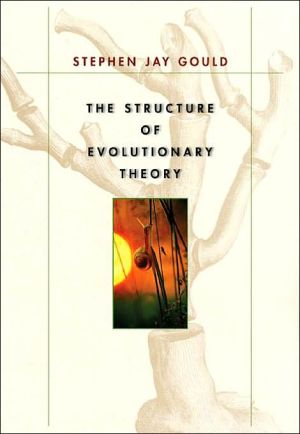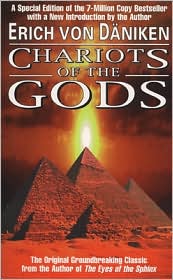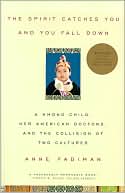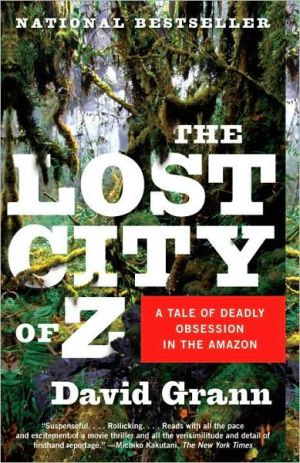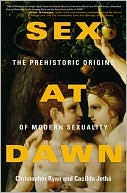The Structure of Evolutionary Theory
The world's most revered and eloquent interpreter of evolutionary ideas offers here a work of explanatory force unprecedented in our time—a landmark publication, both for its historical sweep and for its scientific vision.\ With characteristic attention to detail, Stephen Jay Gould first describes the content and discusses the history and origins of the three core commitments of classical Darwinism: that natural selection works on organisms, not genes or species; that it is almost exclusively...
Search in google:
The world's most revered and eloquent interpreter of evolutionary ideas offers here a work of explanatory force unprecedented in our time—a landmark publication, both for its historical sweep and for its scientific vision.With characteristic attention to detail, Stephen Jay Gould first describes the content and discusses the history and origins of the three core commitments of classical Darwinism: that natural selection works on organisms, not genes or species; that it is almost exclusively the mechanism of adaptive evolutionary change; and that these changes are incremental, not drastic. Next, he examines the three critiques that currently challenge this classic Darwinian edifice: that selection operates on multiple levels, from the gene to the group; that evolution proceeds by a variety of mechanisms, not just natural selection; and that causes operating at broader scales, including catastrophes, have figured prominently in the course of evolution.Then, in a stunning tour de force that will likely stimulate discussion and debate for decades, Gould proposes his own system for integrating these classical commitments and contemporary critiques into a new structure of evolutionary thought.In 2001 the Library of Congress named Stephen Jay Gould one of America's eighty-three Living Legends—people who embody the "quintessentially American ideal of individual creativity, conviction, dedication, and exuberance." Each of these qualities finds full expression in this peerless work, the likes of which the scientific world has not seen—and may not see again—for well over a century. Publishers Weekly Over the past few years, a series of big books on evolution have been published: Human Natures by Paul Ehrlich, Consilience by E.O. Wilson and What Evolution Is by Ernst Mayr, to name just three. Now comes the biggest of them all (physically, at least) a 1,400-plus-page cinderblock of a book from Harvard zoology professor Stephen Jay Gould (The Lying Stones of Marrakech; Ontogeny and Philogeny). The culmination of about 25 years of research and study, this book traces the history of evolutionary thought and charts a path for its future. After Darwin wrote The Origin of Species in 1859, scientists created a synthesis of genetics, ecology and paleontology to explain how natural selection could produce change and form new species. Gould thinks that this "modern synthesis" has hardened into a dogma stifling the science. Gould claims that an obsession with "selfish genes" and simplistic versions of natural selection blinds researchers to the significance of new discoveries about how evolution really works. The rules by which embryos develop, for example, create constraints that channel the flow of evolution. Asteroid impacts and other catastrophes can send evolution off on unpredictable trajectories. And selection, Gould contends, may act not just on individuals or their genes, but on entire species or groups of species, and in ways we've only begun to understand. This book presents Gould in all his incarnations: as a digressive historian, original thinker and cunning polemicist. It is certainly not a perfect work. Gould gives short shrift to the tremendous discoveries spurred by "Darwinian fundamentalism," while he sometimes overplays the importance of hazy theoretical arguments that support his own claims. But even Gould's opponents will recognize this as the magnum opus of one of the world's leading evolutionary thinkers. (Mar.) Copyright 2001 Cahners Business Information.
Chapter One \ \ \ Defining and Revising the\ Structure of Evolutionary Theory\ \ \ \ Theories Need Both Essences and Histories\ \ \ In a famous passage added to later editions of the Origin of Species, Charles Darwin (1872, p. 134) generalized his opening statement on the apparent absurdity of evolving a complex eye through a long series of gradual steps by reminding his readers that they should always treat "obvious" truths with skepticism. In so doing, Darwin also challenged the celebrated definition of science as "organized common sense," as championed by his dear friend Thomas Henry Huxley. Darwin wrote: "When it was first said that the sun stood still and world turned round, the common sense of mankind declared the doctrine false; but the old saying of Vox populi, vox Dei [the voice of the people is the voice of God], as every philosopher knows, cannot be trusted in science."\ Despite his firm residence within England's higher social classes, Darwin took a fully egalitarian approach towards sources of expertise, knowing full well that the most dependable data on behavior and breeding of domesticated and cultivated organisms would be obtained from active farmers and husbandmen, not from lords of their manors or authors of theoretical treatises. As Ghiselin (1969) so cogently stated, Darwin maintained an uncompromisingly "aristocratic" set of values towards judgment of his work—that is, he cared not a whit for the outpourings of vox populi, but fretted endlessly and fearfully about the opinions of a very few key peopleblessed with the rare mix of intelligence, zeal, and attentive practice that we call expertise (a democratic human property, respecting only the requisite mental skills and emotional toughness, and bearing no intrinsic correlation to class, profession or any other fortuity of social circumstance).\ Darwin ranked Hugh Falconer, the Scottish surgeon, paleontologist, and Indian tea grower, within this most discriminating of all his social groups, a panel that included Hooker, Huxley and Lyell as the most prominent members. Thus, when Falconer wrote his important 1863 paper on American fossil elephants (see Chapter 9, pages 745-749, for full discussion of this incident), Darwin flooded himself with anticipatory fear, but then rejoiced in his critic's generally favorable reception of evolution, as embodied in the closing sentence of Falconer's key section: "Darwin has, beyond all his cotemporaries [sic], given an impulse to the philosophical investigation of the most backward and obscure branch of the Biological Sciences of his day; he has laid the foundations of a great edifice; but he need not be surprised if, in the progress of erection, the superstructure is altered by his successors, like the Duomo of Milan, from the roman to a different style of architecture."\ In a letter to Falconer on October 1, 1862 (in F. Darwin, 1903, volume 1, p. 206), Darwin explicitly addressed this passage in Falconer's text. (Darwin had received an advance copy of the manuscript, along with Falconer's request for review and criticism—hence Darwin's reply, in 1862, to a text not printed until the following year): "To return to your concluding sentence: far from being surprised, I look at it as absolutely certain that very much in the Origin will be proved rubbish; but I expect and hope that the framework will stand."\ The statement that God (or the Devil, in some versions) dwells in the details must rank among the most widely cited intellectual witticisms of our time. As with many clever epigrams that spark the reaction "I wish I'd said that!", attribution of authorship tends to drift towards appropriate famous sources. (Virtually any nifty evolutionary saying eventually migrates to T. H. Huxley, just as vernacular commentary about modern America moves towards Mr. Berra.) The apostle of modernism in architecture, Ludwig Mies van der Rohe, may, or may not, have said that "God dwells in the details," but the plethora of tiny and subtle choices that distinguish the elegance of his great buildings from the utter drabness of superficially similar glass boxes throughout the world surely validates his candidacy for an optimal linkage of word and deed.\ Architecture may assert a more concrete claim, but nothing beats the extraordinary subtlety of language as a medium for expressing the importance of apparently trivial details. The architectural metaphors of Milan's cathedral, used by both Falconer and Darwin, may strike us as effectively identical at first read. Falconer says that the foundations will persist as Darwin's legacy, but that the superstructure will probably be reconstructed in a quite different style. Darwin responds by acknowledging Falconer's conjecture that the theory of natural selection will undergo substantial change; indeed, in his characteristically diffident way, Darwin even professes himself "absolutely certain" that much of the Origin's content will be exposed as "rubbish." But he then states not only a hope, but also an expectation, that the "framework" will stand.\ We might easily read this correspondence too casually as a polite dialogue between friends, airing a few unimportant disagreements amidst a commitment to mutual support. But I think that this exchange between Falconer and Darwin includes a far more "edgy" quality beneath its diplomacy. Consider the different predictions that flow from the disparate metaphors chosen by each author for the Duomo of Milan—Falconer's "foundation" vs. Darwin's "framework." After all, a foundation is an invisible system of support, sunk into the ground, and intended as protection against sinking or toppling of the overlying public structure. A framework, on the other hand, defines the basic form and outline of the public structure itself. Thus, the two men conjure up very different pictures in their crystal balls. Falconer expects that the underlying evolutionary principle of descent with modification will persist as a factual foundation for forthcoming theories devised to explain the genealogical tree of life. Darwin counters that the theory of natural selection will persist as a basic explanation of evolution, even though many details, and even some subsidiary generalities, cited within the Origin will later be rejected as false, or even illogical.\ I stress this distinction, so verbally and disarmingly trivial at a first and superficial skim through Falconer's and Darwin's words, but so incisive and portentous as contrasting predictions about the history of evolutionary theory, because my own position—closer to Falconer than to Darwin, but in accord with Darwin on one key point—led me to write this book, while also supplying the organizing principle for the "one long argument" of its entirety. I do believe that the Darwinian framework, and not just the foundation, persists in the emerging structure of a more adequate evolutionary theory. But I also hold, with Falconer, that substantial changes, introduced during the last half of the 20th century, have built a structure so expanded beyond the original Darwinian core, and so enlarged by new principles of macroevolutionary explanation, that the full exposition, while remaining within the domain of Darwinian logic, must be construed as basically different from the canonical theory of natural selection, rather than simply extended.\ A closer study of the material basis for Falconer and Darwin's metaphors—the Duomo (or Cathedral) of Milan—might help to clarify this important distinction. As with so many buildings of such size, expense, and centrality (both geographically and spiritually), the construction of the Duomo occupied several centuries and included an amalgam of radically changing styles and purposes. Construction began at the chevet, or eastern end, of the cathedral in the late 14th century. The tall windows of the chevet, with their glorious flamboyant tracery, strike me as the finest achievement of the entire structure, and as the greatest artistic expression of this highly ornamented latest Gothic style. (The term "flamboyant" literally refers to the flame-shaped element so extensively used in the tracery, but the word then came to mean "richly decorated" and "showy," initially as an apt description of the overall style, but then extended to the more general meaning used today.)\ Coming now to the main point, construction then slowed considerably, and the main western facade and entrance way (Fig. 1-1) dates from the late 16th century, when stylistic preferences had changed drastically from the points, curves and traceries of Gothic to the orthogonal, low-angled or gently rounded lintels and pediments of classical Baroque preferences. Thus, the first two tiers of the main (western) entrance to the Duomo display a style that, in one sense, could not be more formally discordant with Gothic elements of design, but that somehow became integrated into an interesting coherence. (The third tier of the western facade, built much later, returned to a "retro" Gothic style, thus suggesting a metaphorical reversal of phylogenetic conventions, as up leads to older—in style if not in actual time of emplacement!) Finally, in a distinctive and controversial icing upon the entire structure (Fig. 1-2), the "wedding cake," or row-upon-row of Gothic pinnacles festooning the tops of all walls and arches with their purely ornamental forms, did not crown the edifice until the beginning of the 19th century, when Napoleon conquered the city and ordered their construction to complete the Duomo after so many centuries of work. (These pinnacle forests may amuse or disgust architectural purists, but no one can deny their unintended role in making the Duomo so uniquely and immediately recognizable as the icon of the city.)\ How, then, shall we state the most appropriate contrast between the Duomo of Milan and the building of evolutionary theory since Darwin's Origin in 1859? If we grant continuity to the intellectual edifice (as implied by comparison with a discrete building that continually grew but did not change its location or basic function), then how shall we conceive "the structure of evolutionary theory" (chosen, in large measure, as the title for this book because I wanted to address, at least in practical terms, this central question in the history and content of science)? Shall we accept Darwin's triumphalist stance and hold that the framework remains basically fixed, with all visually substantial change analogous to the non-structural, and literally superficial, icing of topmost pinnacles? Or shall we embrace Falconer's richer and more critical, but still fully positive, concept of a structure that has changed in radical ways by incorporating entirely different styles into crucial parts of the building (even the front entrance!), while still managing to integrate all the differences into a coherent and functional whole, encompassing more and more territory in its continuing enlargement?\ Darwin's version remains Gothic, and basically unchanged beyond the visual equivalent of lip service. Falconer's version retains the Gothic base as a positive constraint and director, but then branches out into novel forms that mesh with the base but convert the growing structure into a new entity, largely defined by the outlines of its history. (Note that no one has suggested the third alternative, often the fate of cathedrals—destruction, either total or partial, followed by a new building of contrary or oppositional form, erected over a different foundation.)\ In order to enter such a discourse about "the structure of evolutionary theory" at all, we must accept the validity, or at least the intellectual coherence and potential definability, of some key postulates and assumptions that are often not spelled out at all (especially by scientists supposedly engaged in the work), and are, moreover, not always granted this form of intelligibility by philosophers and social critics who do engage such questions explicitly. Most importantly, I must be able to describe a construct like "evolutionary theory" as a genuine "thing"—an entity with discrete boundaries and a definable history—especially if I want to "cash out," as more than a confusingly poetic image, an analogy to the indubitable bricks and mortar of a cathedral.\ In particular, and to formulate the general problem in terms of the specific example needed to justify the existence of this book, can "Darwinism" or "Darwinian theory" be treated as an entity with defining properties of "anatomical form" that permit us to specify a beginning and, most crucially for the analysis I wish to pursue, to judge the subsequent history of Darwinism with enough rigor to evaluate successes, failures and, especially, the degree and character of alterations? This book asserts, as its key premise and one long argument, that such an understanding of modern evolutionary theory places the subject in a particularly "happy" intellectual status—with the central core of Darwinian logic sufficiently intact to maintain continuity as the centerpiece of the entire field, but with enough important changes (to all major branches extending from this core) to alter the structure of evolutionary theory into something truly different by expansion, addition, and redefinition. In short, "The structure of evolutionary theory" combines enough stability for coherence with enough change to keep any keen mind in a perpetual mode of search and challenge.\ The distinction between Falconer's and Darwin's predictions, a key ingredient in my analysis, rests upon our ability to define the central features of Darwinism (its autapomorphies, if you will), so that we may then discern whether the extent of alteration in our modern understanding of evolutionary mechanisms and causes remains within the central logic of this Darwinian foundation, or has now changed so profoundly that, by any fair criterion in vernacular understanding of language, or by any more formal account of departure from original premises, our current explanatory theory must be described as a different kind of mental "thing." How, in short, can such an intellectual entity be defined? And what degree of change can be tolerated or accommodated within the structure of such an entity before we must alter the name and declare the entity invalid or overthrown? Or do such questions just represent a fool's errand from the start, because intellectual positions can't be reified into sufficient equivalents of buildings or organisms to bear the weight of such an inquiry?\ As arrogant as I may be in general, I am not sufficiently doltish or vainglorious to imagine that I can meaningfully address the deep philosophical questions embedded within this general inquiry of our intellectual ages—that is, fruitful modes of analysis for the history of human thought. I shall therefore take refuge in an escape route that has traditionally been granted to scientists: the liberty to act as a practical philistine. Instead of suggesting a principled and general solution, I shall ask whether I can specify an operational way to define "Darwinism" (and other intellectual entities) in a manner specific enough to win shared agreement and understanding among readers, but broad enough to avoid the doctrinal quarrels about membership and allegiance that always seem to arise when we define intellectual commitments as pledges of fealty to lists of dogmata (not to mention initiation rites, secret handshakes and membership cards—in short, the intellectual paraphernalia that led Karl Marx to make his famous comment to a French journalist: "je ne suis pas marxiste").\ As a working proposal, and as so often in this book (and in human affairs in general), a "Goldilocks solution" embodies the blessedly practical kind of approach that permits contentious and self-serving human beings (God love us) to break intellectual bread together in pursuit of common goals rather than personal triumph. (For this reason, I have always preferred, as guides to human action, messy hypothetical imperatives like the Golden Rule, based on negotiation, compromise and general respect, to the Kantian categorical imperatives of absolute righteousness, in whose name we so often murder and maim until we decide that we had followed the wrong instantiation of the right generality.) We must, in short and in this case, steer between the "too little" of refusing to grant any kind of "essence," or hard anatomy of defining concepts, to a theory like Darwinism; and the "too much" of an identification so burdened with a long checklist of exigent criteria that we will either spend all our time debating the status of particular items (and never addressing the heart or central meaning of the theory), or we will waste our efforts, and poison our communities, with arguments about credentials and anathemata, applied to individual applicants for membership.\ (Continues...)\ \ \ Excerpted from The Structure Of Evolutionary Theory by Stephen Jay Gould. Copyright © 2002 by President and Fellows of Harvard College. Excerpted by permission. All rights reserved. No part of this excerpt may be reproduced or reprinted without permission in writing from the publisher. \ \ \ \
1. Defining and Revising the Structure of Evolutionary TheoryPart I: The History of Darwinian Logic and Debate2. The Essence of Darwinism and the Basis of Modern Orthodoxy: An Exegesis of the Origin of Species3. Seeds of Hierarchy4. Internalism and Laws of Form: Pre-Darwinian Alternatives to Functionalism5. The Fruitful Facets of Galton's Polyhedron: Channels and Saltations in Post-Darwinian Formalism6. Pattern and Progress on the Geological Stage7. The Modern Synthesis as a Limited ConsensusPart II: Towards a Revised and Expanded Evolutionary Theory8. Species as Individuals in the Hierarchical Theory of Selection9. Punctuated Equilibrium and the Validation of Macroevolutionary Theory10. The Integration of Constraint and Adaptation (Structure and Function) in Ontogeny and Phylogeny: Historical Constraints and the Evolution of Development11. The Integration of Constraint and Adaptation (Structure and Function) in Ontogeny and Phylogeny: Structural Constraints, Spandrels, and the Centrality of Exaptation in Macroevolution12. Tiers of Time and Trials of Extrapolationism, With an Epilog on the Interaction of General Theory and Contingent HistoryBibliographyIndex
\ From Barnes & NobleHarvard professor and MacArthur Prize fellow Stephen Jay Gould views this book as his magnum opus, the definitive statement of his long-developing views on evolutionary ideas. As the work of the foremost contemporary interpreter of evolution, The Structure of Evolutionary Theory will be scrutinized earnestly by members of the academy and the scientific community. As the work of the prose master who gave us The Mismeasure of Man and Wonderful Life, this brisk and brilliant tome will delight anyone who believes that life on the edge is exciting.\ \ \ \ \ BiologistStephen Jay Gould's work always generates keen interest and the present volume perhaps more so given his recent death. It is a thoughtful and technical book—a statement of position and a response to critics—and it is huge...It is not a textbook as the title might suggest; instead, it is evolutionary theory as viewed through Gould's unique vision.\ — Stephen Lewis\ \ \ \ BooklistFor all its rigorous detail and painstaking historical, scientific, and philosophical explication, Gould's massive work is profoundly personal and dramatic, laced as it is with his great love for Darwin, frank intellectual autobiography, and his belief that the history of evolutionary thought "constitutes an epic tale"...[E]very scientifically inclined reader, will be affected by some aspect of Gould's passionate argument, humanistic sensibility, and sheer pleasure in the noble pursuit of knowledge and understanding.\ — Donna Seaman\ \ \ \ \ \ New York Review of Books[This is] a summation of Stephen Jay Gould's life work, building on Darwinism to provide a novel synthesis of how evolution has shaped the living world...One of the joys of reading about good science is the chance not only to observe how scientific theory works, but also to participate in the workings of the mind behind the words. In Gould's...The Structure of Evolutionary Theory, the reader will find such joy in abundance.\ — Tim Flannery\ \ \ \ \ \ Ruminator ReviewStephen Jay Gould doesn't hold anything back in this remarkable and important book. Impressive on many levels, The Structure of Evolutionary Theory represents Gould's all-out attempt to revise and extend evolutionary theory as proposed by Darwin in 1859...Gould's respect and admiration (I would even say, love) for Darwin as a scientist and as a man have been evident throughout all his writings, and this book, which begins and ends with Darwin, is no exception. In stating his motivation for it, Gould leaves no doubt that his goal is not just to explicate evolutionary theory but to laud Darwin as well...While presenting a case that should strengthen his own place in history, Gould also makes it known that he is preserving the legacy of his mentor as well, at least for now.\ — Mark Davis\ \ \ \ \ \ San Francisco ChronicleFascinating, discursive, dogmatic, intensely personal and often quite technical, The Structure of Evolutionary Theory is also in most of its sections readily accessible to lay readers—and well worth the effort...This summation of Gould's idiosyncratic life work will undoubtedly arouse tremendous enthusiasm in loyal Gouldites...Gould's detailed arguments and scholarly exegesis of the historical literature on evolution's forebears and conflicts fully justify the length of this book. But the nuggets of Gould, the literate and rambunctious scientist, give it delicious flavor on page after page...This is a brilliant, controversial, thorough and immensely readable updating of Darwin.\ — David Perlman\ \ \ \ \ \ The EconomistStephen Jay Gould was no lightweight, physically or intellectually. This vast book...unveils his distinctive vision of evolutionary biology—as it should be, as it is, and as it has been...A book of great power, scope and learning...It is a book that one would expect to read and reread, for Gould articulates and defends a distinctive vision of the agenda of evolutionary biology; of the mechanisms of evolutionary change; and of the relationship of evolutionary biology to its own past...There is, indeed, a certain grandeur to this view of life.\ \ \ \ \ \ The SpectatorBy literary standards [The Structure of Evolutionary Theory] is unique, a combination of scientific argument, historical analysis both of this argument and of all that went before it, an apologia pro vita sua, and many entertaining diversions...It is hard to think of any one else with this combination of polymathic ability and of sheer cheek, and equally hard to imagine filling a scientific auditorium with people who have read it right through—one of several ways in which the book can fairly be likened to The Origin of Species.\ — John R. G. Turner\ \ \ \ \ \ Times Literary SupplementThe Structure of Evolutionary Theory was, we are told, ten years in the making, and is in many ways likely to be seen as Gould's greatest achievement. Of the enjoyment that many hundreds of thousands have gained from reading Gould's essays there can be no doubt...[T]here is no doubt that this is a profound and major contribution to evolutionary theory, standing high above the smoke of battle in the Darwin Wars.\ — Steven Rose\ \ \ \ \ \ Washington Post[A] magisterial tome...[The Structure of Evolutionary Theory] is destined to go down in history alongside the writings of Galileo, Darwin, Huxley, Freud, Mayr and others as a work that will change its culture forever. Gould's critics (and there are plenty of them) may weep and gnash their teeth at such an assessment, but they ignore him at their—and our—peril. This man has something important to say about the preeminent origin myth of our age—evolutionary theory—and he has said it in this magnificent work.\ — Michael Shermer\ \ \ \ \ \ Publishers WeeklyOver the past few years, a series of big books on evolution have been published: Human Natures by Paul Ehrlich, Consilience by E.O. Wilson and What Evolution Is by Ernst Mayr, to name just three. Now comes the biggest of them all (physically, at least) a 1,400-plus-page cinderblock of a book from Harvard zoology professor Stephen Jay Gould (The Lying Stones of Marrakech; Ontogeny and Philogeny). The culmination of about 25 years of research and study, this book traces the history of evolutionary thought and charts a path for its future. After Darwin wrote The Origin of Species in 1859, scientists created a synthesis of genetics, ecology and paleontology to explain how natural selection could produce change and form new species. Gould thinks that this "modern synthesis" has hardened into a dogma stifling the science. Gould claims that an obsession with "selfish genes" and simplistic versions of natural selection blinds researchers to the significance of new discoveries about how evolution really works. The rules by which embryos develop, for example, create constraints that channel the flow of evolution. Asteroid impacts and other catastrophes can send evolution off on unpredictable trajectories. And selection, Gould contends, may act not just on individuals or their genes, but on entire species or groups of species, and in ways we've only begun to understand. This book presents Gould in all his incarnations: as a digressive historian, original thinker and cunning polemicist. It is certainly not a perfect work. Gould gives short shrift to the tremendous discoveries spurred by "Darwinian fundamentalism," while he sometimes overplays the importance of hazy theoretical arguments that support his own claims. But even Gould's opponents will recognize this as the magnum opus of one of the world's leading evolutionary thinkers. (Mar.) Copyright 2001 Cahners Business Information.\ \ \ \ \ Library JournalThe ideas and literary stylings in this massive work by MacArthur Prize Fellow Gould (Alexander Agassiz Professor of Zoology, Harvard) are both extravagantly bountiful and stupefyingly overwrought. Gould's overarching purpose is to expound upon how three main tenets of Darwinism have permuted throughout numerous historical and contemporary writings on evolutionary theory. In his erudite discussions, there is no significant school of thought that Gould fails to analyze, interpret, and contextualize thoroughly. While indisputably the product of one of the most fertile intellects of modern science, this book is also bloated, redundant, and self-indulgent. The longest chapter, at around 250 pages, celebrates Gould's own theory of punctuated equilibrium, including an interesting but utterly extraneous review of how the theory has been depicted in general culture. For its exhaustive scholarly achievement, this book is indispensable for any natural history, philosophy of science, or good general science collection. Still, the ultimate critique is that it is very highly recommended but with serious reservations. Gregg Sapp, Science Lib., SUNY at Albany Copyright 2001 Cahners Business Information.\ \
